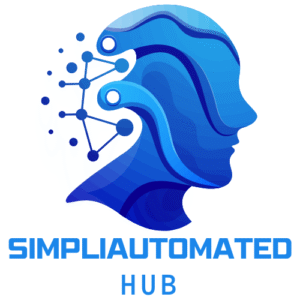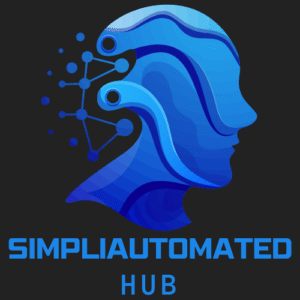Ever found yourself stuck in a jungle of repetitive tasks, wishing you could just clone yourself to get more done? AI automation is quickly becoming the “extra set of hands” every business craves—with zero onboarding drama and a lot more caffeine stamina.
By 2025, McKinsey projects that up to 45% of routine office work could be automated using today’s AI tools. That isn’t just big news for Silicon Valley giants—it’s an opportunity for teams of any size to reclaim hours, cut down errors, and keep business momentum rolling.
Whether you’re a marketer, entrepreneur, or the go-to “tech person” in your circle, you’re likely asking: How can AI actually make things faster, smoother, or more profitable for my business—without a degree in rocket science?
The good news? Modern AI automation is far more drag-and-drop than deep learning, putting real productivity AND creativity boosts within reach:
- Automate repetitive grunt work—think sending onboarding emails, logging leads, or managing your calendar.
- Personalize customer experiences at scale, from proactively tailored emails to chatbots with a human touch.
- Spot patterns and insights that help teams optimize campaigns or predict sales trends, often before people notice the shift.
You’ll get a clear breakdown on how AI automation differs from old-school tech, practical examples across marketing, sales, support, and operations, and realistic tips on picking tools that match your team’s comfort zone.
All with a conversational vibe—because exploring AI shouldn’t feel like navigating a maze of jargon or hype.
Ready to see how AI becomes your team’s invisible MVP? Next up: A plain-English look at what AI automation actually is (and isn’t)—plus why it’s now a must-have for anyone serious about growth.
Understanding AI Automation in Business
Picture this: AI automation is like hiring a virtual team member who never needs a coffee break—tackling repetitive tasks 24/7 with zero complaints. It’s software that uses artificial intelligence to manage workflows, answer questions, process data, or even spark creative ideas, allowing human teams to focus on bigger-picture work.
How Does AI Automation Differ from Traditional Automation?
Many businesses already use tools that automate simple “if this, then that” actions—think old-school email triggers or scheduled reports. AI-powered automation takes this further by learning from data, adapting to changes, and handling more complex decisions.
Think of the difference like comparing:
- Traditional Automation: Pre-set rules—”If invoice arrives, send email.”
- AI Automation: “Let’s analyze invoice patterns and automatically flag anything unusual.”
This means AI can personalize your customer emails, detect fraud before it happens, and tailor recommendations without you having to lift a finger.
The Core Principles: How AI Gets Smart
AI automation stands on three main pillars:
- Machine Learning: Systems that learn from historical data (like how Netflix learns your watch habits).
- Natural Language Processing (NLP): Enables chatbots and tools to understand and respond to human language—imagine a help desk that can chat like a real support agent.
- Workflow Automation: Connects all your apps and data pipes so routine tasks happen automatically (think Zapier or Microsoft Power Automate).
When you “train” an AI model, it’s just like onboarding a new employee—you show it examples, guide its learning, and then watch it work smarter and faster over time.
Why Every Business Should Care (Even Small Teams)
Unlocking AI automation means reclaiming hours every week—research shows small businesses can automate up to 30% of daily tasks without coding skills. Whether you’re running a four-person marketing team or a growing startup, key benefits include:
- Boosting productivity: More done, less burnout
- Reducing errors: Goodbye to copy-paste mistakes
- Serving customers faster: 24/7 responsiveness without extra headcount
One standout stat? Companies using AI for routine workflows report average time savings of 20-40% per process—that’s like gifting your team an extra workday every week.
Common Myths: Busting Stubborn Misconceptions
Still worried that “AI is only for tech giants”? Actually, AI tools like ChatGPT, Zapier, and Mailchimp are built for non-technical users and offer free trials so you can experiment safely.
Other myths to let go of:
- “It’s too complicated”: Many platforms use drag-and-drop interfaces.
- “AI will replace my whole team”: Instead, it amplifies what your people can do.
AI automation is quickly becoming as essential as email—if you can delegate a task, chances are an AI tool can handle it.
Understanding today’s AI automation is the difference between working harder and working smarter. By treating AI as your ever-alert assistant, you’re set to free your time, improve results, and confidently join the ranks of teams using intelligent automation—no computer science degree required.
Core Areas Where AI Automation Delivers Business Value
Marketing Automation
Imagine setting your marketing on autopilot—AI makes it possible to personalize emails, automate drip campaigns, and optimize A/B testing without breaking a sweat.
Picture an AI assistant that schedules your social posts, replies to FAQs, and even flags trending topics as you sip your morning coffee.
Here’s how businesses put AI to work in marketing:
- Email Campaigns: Send “just-right” offers at the perfect time based on customer behavior.
- Social Media Automation: Tools like Buffer and ManyChat handle posting, comment responses, and trend suggestions.
- A/B Testing: AI quickly spots top-performing content and automatically pivots to winners.
Companies report up to 30% higher engagement rates and save dozens of hours each month with these tools.
Quotable: “Smart marketing automation lets you work smarter, not longer—a win every brand can feel.”
Sales and Customer Relationship Management (CRM)
AI transforms sales teams into efficiency juggernauts by scoring leads, nudging follow-ups, and offering tailored recommendations—24/7.
With predictive analytics, sales forecasts go from guesswork to actionable insight. Integrations with platforms like HubSpot and Salesforce allow AI to:
- Prioritize leads most likely to convert
- Automate data entry and sync customer details
- Predict purchase behavior by analyzing past trends
In a recent Salesforce study, companies using AI for lead scoring saw a 15% jump in conversion rates and a longer customer lifetime value.
Quotable: “AI in CRM isn’t just a trend—it’s the new secret weapon for winning loyal customers.”
Customer Support and Service
A great customer experience starts with a fast answer—even at 2 A.M.
AI chatbots handle FAQs, route tickets, and keep your business running 24/7—freeing your team for complex cases that need the human touch.
Best practice? Use bots for basics, but always leave room for a real person when it counts.
- Chatbots: Instantly answer up to 80% of routine queries
- Automated Helpdesks: Log, sort, and escalate tickets effortlessly
One study found that AI customer support reduced response times by up to 60%, driving satisfaction sky-high.
Quotable: “Let AI handle the midnight rush, so your team can wow customers in the daylight.”
Operations, Compliance, and Risk Management
Meet your new digital back office: AI extracts key invoice details, flags suspicious transactions, and builds audit trails—faster and more accurately than any spreadsheet wizard.
Inventory automation means fewer stockouts and less over-ordering:
- Invoice/Expense Automation: Parse documents and trigger workflows
- Supply Chain AI: Predict demand, automate ordering, avoid costly delays
- Compliance: Monitor transactions, generate real-time reports
According to McKinsey, AI-backed operations can slash operational costs by up to 25% and reduce manual error rates by nearly half.
Predictive Analytics and Decision Support
Think of AI analytics as “weather forecasting for your business data”—spotting patterns, flagging risks, and revealing new opportunities before they hit your balance sheet.
You’ll get:
- Actionable insights for market trends and campaign performance
- Data-driven support for product launches and investment decisions
Teams using predictive AI say they’ve shifted from “putting out fires” to proactively driving business growth.
Here’s the key: Whether it’s marketing, sales, support, or back-office ops, AI automation unlocks time, insight, and efficiency—giving you room to focus on everything that truly drives success.
Getting Started with AI Automation: A Practical Framework
Spotting Quick Wins for Automation
If you’re just starting out, look for repetitive tasks that eat up your day.
Picture this: onboarding emails, appointment scheduling, or basic reporting that keep you glued to your inbox.
Begin by listing these time-consuming processes—then circle the ones you’d love to hand off.
Common automation-ready tasks include:
- Onboarding or welcome email sequences
- Social media post scheduling
- Weekly sales or performance reports
- Appointment or meeting bookings
You don’t need to automate everything at once—start small and scale after those early wins.
“Small automations can save dozens of hours per month—imagine freeing up one hour every single day.”
Choosing AI Tools That Fit Your Team
The secret weapon for non-coders? No-code platforms—tools designed for everyone.
Try platforms like:
- Zapier: Automate between 6000+ apps, starting free.
- Make.com: Visual workflow builder, good for mapping complex processes.
- Microsoft Power Automate: Tight integration if you’re already using Office 365.
Looking for all-in-one solutions? Explore:
- Salesforce or HubSpot for CRM, sales, and marketing automation.
- Mailchimp for smart email campaigns.
- ManyChat for chatbot automations—great on social platforms.
When selecting an AI tool, ask:
- What’s my team’s comfort level with learning new software?
- Which workflows matter most to our business goals?
- Can we test a pilot or use a free version first?
“There’s no need to ‘rip and replace’—experiment before investing for real.”
Data and Team: The Power Duo of Success
Automation is only as good as the data it uses.
- Clean, organized data makes your AI flow smoothly and prevents embarrassing mistakes.
- Regularly update customer info, project statuses, and inventory counts for best results.
- Foster a “let’s experiment” mindset—show your team how automation frees up time for creative work.
A quick tip: Run a team demo and ask for feedback—a collaborative kickoff builds trust from day one.
“Empower your team—AI isn’t about replacing people, but unlocking what humans do best.”
Time to Launch: From Pilot to Powerhouse
Ready to roll? Set clear goals, then launch your first automated workflow as a pilot.
Key steps for any pilot:
- Define your goal (e.g., “Cut weekly reporting time in half”)
- Build and test your automation
- Monitor key metrics: time saved, errors reduced, output quality
- Gather feedback—both data and human insight matter
Start with one process, improve it, then expand to new areas.
- Avoid common pitfalls: Don’t over-automate; always review initial results yourself.
- Celebrate quick wins and build confidence—success breeds momentum.
“Even a single automation can boost productivity by up to 30%—it’s all about finding what fits your workflow first.”
Successful teams start with manageable projects, choose tools that make sense, and rally everyone around the goal of working smarter—not harder. Ready to see those first results? Start with one task, make it seamless, and watch your momentum build.
Key Considerations, Challenges, and Future Trends
Setting Realistic Expectations and Measuring Impact
Adopting AI automation isn’t instant magic—it’s a process with ups, downs, and learning curves.
Some tasks, like automated email scheduling or chatbots, can be deployed in a week. Others, such as integrating multiple data sources, may take months to perfect.
Common hurdles include:
- Integration issues: Connecting old systems with new AI tools can cause headaches.
- Staff resistance: Change often triggers anxiety.
- Unrealistic ROI timelines: Some benefits need runway—be patient.
Measuring results is essential. Focus on:
- Time saved per task (e.g., automating data entry shaves off 10+ hours/month per employee)
- Error reduction across workflows (AI can decrease mistakes by 30-50% in routine processes)
- Business growth tracked by increased leads, sales, or customer retention post-automation
Picture this: Your team is spending half the week on repetitive reports. With AI handling it, you reclaim days for strategic work.
“You can’t improve what you don’t measure—automation’s real value shows up in your bottom line and calendar.”
—
Ethical, Legal, and Cultural Considerations
AI touches sensitive ground: data privacy, transparency, and trust.
Be clear with customers and staff when bots, not humans, are responding or making decisions.
Key must-dos:
- Prioritize compliance: Ensure AI meets GDPR, HIPAA, or industry regulations
- Explain choices: Let users know how AI influences outcomes (like recommendations or approvals)
- Champion responsible use: Avoid automating tasks with complex ethical dimensions (think hiring or performance reviews) without robust checks
A brand seen as ethical attracts loyalty and stands out. “People trust automation most when you’re upfront about how and why it’s used.”
—
Where AI Automation Is Heading
AI-powered tools are evolving—fast. Expect to see:
- Smarter integrations: No-code connections between every app you use
- Conversational AI: Natural, human-like chatbot experiences
- Wider access: User-friendly platforms bringing AI automation to small teams and solo entrepreneurs
By 2027, 80% of customer interactions could be managed by AI, up from 40% in 2023 (Gartner).
Imagine AI that not only handles your workflows but proactively suggests improvements. The future is about agility—the companies that stay curious and experiment now will lead the pack tomorrow.
—
Successful AI automation means pairing clear expectations, strong ethics, and ongoing curiosity. Start with small wins, measure real outcomes, and let your culture grow alongside the technology.
Conclusion
AI automation in business isn’t just a tech trend—it’s your shortcut to working smarter, freeing up time, and staying competitive in a fast-changing world. By bringing intelligent tools into your daily operations, you empower your team to unlock productivity and creativity that manual workflows can’t touch.
You don’t have to be a coder or industry giant to get started. With today’s accessible platforms, even small teams can automate high-impact tasks and discover new efficiencies right away.
- Identify quick-win processes stealing your time—think onboarding emails, scheduling, or routine reports
- Pilot user-friendly AI tools like Zapier, ManyChat, or Mailchimp—experiment risk-free before a bigger rollout
- Clean up your data and rally your team to embrace automation; success starts with a collaborative mindset
- Track your wins—measure time saved, errors reduced, and team morale to show real results
- Commit to ethical, transparent AI use—make trust and clarity your baseline, not just your best-case
Set yourself up for momentum:
- Pick a repetitive task draining your energy.
- Research one AI automation tool that fits your workflow.
- Launch a small pilot, get feedback, and scale as you win confidence.
The sooner you experiment, the faster your business will adapt, grow, and thrive.
Momentum belongs to the curious. The businesses that start automating now will be the ones setting tomorrow’s pace.
You don’t need a crystal ball to see the future—just the willingness to build it, one smart workflow at a time.









